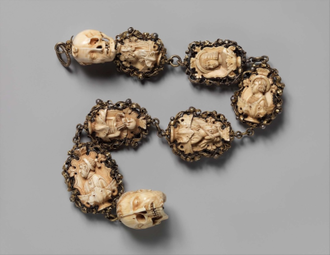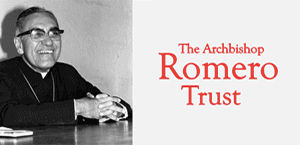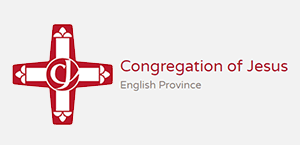Gospel in Art: From that day on they made plans to put him to death

Rosary, German, 1525. Ivory, silver, partially gilded mounts © Metropolitan Museum, New York
Source: Christian Art
Gospel of 12 April 2025
John 11:45-56
At that time: Many of the Jews, who had come with Mary and had seen what Jesus did, believed in him, but some of them went to the Pharisees and told them what Jesus had done. So the chief priests and the Pharisees gathered the council and said, 'What are we to do? For this man performs many signs. If we let him go on like this, everyone will believe in him, and the Romans will come and take away both our Place and our nation.' But one of them, Caiaphas, who was high priest that year, said to them, 'You know nothing at all. Nor do you understand that it is better for you that one man should die for the people, not that the whole nation should perish.' He did not say this of his own accord, but being high priest that year he prophesied that Jesus would die for the nation, and not for the nation only, but also to gather into one the children of God who are scattered abroad. So from that day on they made plans to put him to death.
Jesus therefore no longer walked openly among the Jews, but went from there to the region near the wilderness, to a town called Ephraim, and there he stayed with the disciples.
Now the Passover of the Jews was at hand, and many went up from the country to Jerusalem before the Passover to purify themselves. They were looking for Jesus and saying to one another as they stood in the Temple, 'What do you think? That he will not come to the feast at all?'
Reflection on the German Rosary Beads
This evening marks the beginning of Holy Week, a time for reflecting on the final days of Jesus' life, starting with His entry into Jerusalem. In today's Gospel, we hear how the Jewish authorities made a formal decision to have Jesus put to death. From that moment on, as the passage states, "they were determined to put Him to death." This event follows immediately after Jesus had raised Lazarus from the dead, an act of life-giving power that, according to John's Gospel, sealed His fate. Jesus brought life in many ways, yet it was for this very reason that He was condemned to death. Life and death are always deeply intertwined, not as opposites, but as companions on the same journey. One does not exist without the other; they walk side by side, shaping the rhythm of existence.
However, without realising it, those responsible for Jesus' death in the coming Holy Week, enabled His mission to continue in an even greater way. As today's Gospel reminds us, Jesus died "to gather together in unity the scattered children of God." Through His death, He revealed God's boundless, life-giving love, drawing people together around the cross. The cross, not as a symbol of defeat, but as the ultimate sign of divine love. As we enter Holy Week, we are invited to stand before the cross, allowing ourselves to be drawn into the embrace of Christ's love, which reaches out to all.
As I said, life and death are deeply intertwined, a truth we are especially reminded of this coming week. As we reflect on Jesus' journey to the cross, we see how life and death are not separate forces but closely connected; death leading to new life, sacrifice giving way to redemption. This theme is captured powerfully in our German rosary, crafted between 1500 and 1525, where each bead visually represents the duality of existence. The rosary beads feature the bust of a well-fed burgher or maiden on one side, symbolising the fullness of life, while the reverse side reveals a skeleton, a stark reminder of mortality. The terminal beads are even more striking, depicting the head of a deceased man, with half his face consumed by decay. These haunting yet beautiful rosaries were designed to remind the faithful of life's fleeting nature and the importance of living virtuously in preparation for eternity. They serve as a memento mori, urging Christians to remain mindful of their faith, knowing that earthly life is temporary, but the promise of salvation is eternal.
LINKS
Gospel in Art: https://christian.art/
Today's Reflection: https://christian.art/daily-gospel-reading/john-11-45-56-2025/ (with audio)


















